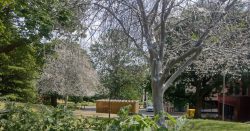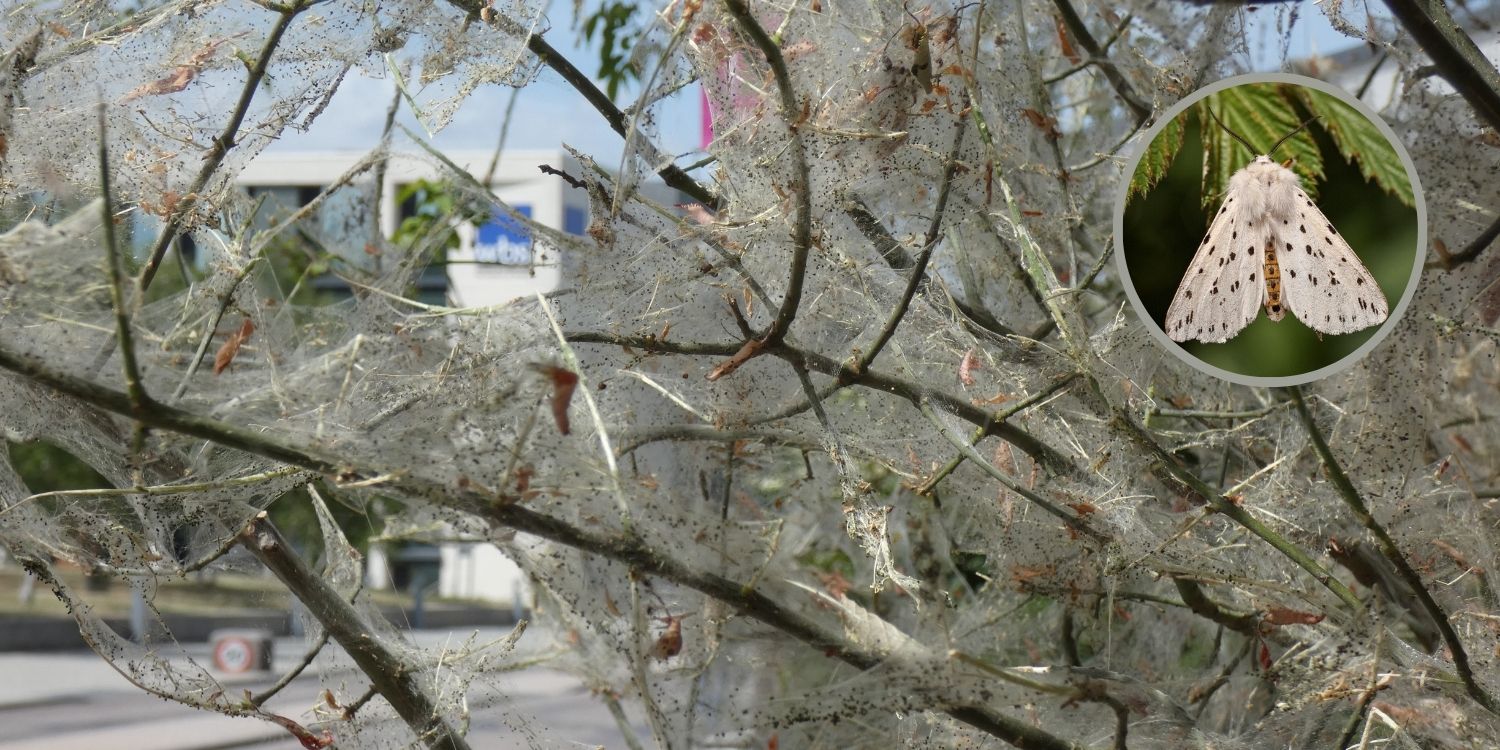Climate News: Ermine moths spin eerie webs on campus trees
In recent days, many bushes and trees on campus have been coated with a silvery veil, reminiscent of cobwebs. These are not the work of spiders, however, but small ermine moth caterpillars, which spin these webs to protect and feed their young.
The University of Warwick released a statement on Monday 19 May, clarifying the phenomenon for concerned campus residents. The sudden widespread appearance of the webs is likely due to the recent unseasonably warm weather. It asserts that – despite the leaf-stripping feeding pattern of the larvae – the webs are not damaging to the plant life they engulf, as this will quickly regenerate in the coming months.
The webs overall are harmless, and will in fact be a boon to the ecosystem, with the larvae and adults providing much needed food for predators and boosting biodiversity
These webs can often be a source of confusion for those unfamiliar with ermine moths, as the dead-looking trees and bushes, along with their spooky associations, create an unsettling image. One Warwick student even stated that the webs “looked like Halloween decorations.”
The ermine moth webs will not be sticking around until October, however. Typically, ermine webs only last until June, disappearing over the summer. The adult moths will take flight later in the year, having eaten their fill in the webbing stage and spun a hard cocoon to pupate in. As a nocturnal species, they are most likely to be spotted at night from late June to September.

Ermine web-covered trees in Cryfield Village. Image: Luke Evans
Moths and caterpillars aren’t the only creatures that can be expected in large numbers thanks to these webs. The boom of available prey encourages their natural predators to flock to the area. These include hedgehogs, bats, beetles and birds. A study shows that blue tits in particular experience greater population growth in years of high moth populations.
The phenomenon isn’t limited to Coventry. Ermine moths are commonly found across the British Isles, though they become rarer further north. Sightings of these webs have been reported in Herefordshire, Nottinghamshire, and Milton Keynes, as well as here in the West Midlands.
The webs overall are harmless, and will in fact be a boon to the ecosystem, with the larvae and adults providing much needed food for predators and boosting biodiversity in the local area. They usually only affect blackthorn, hawthorn, spindle and bird-cherry trees and bushes, with different species of ermine moths preferring different species of tree. In the meantime, experts recommend not touching the webs, and allowing nature to flourish undisturbed.

Comments